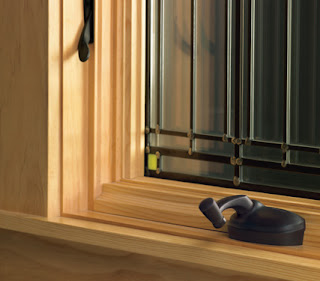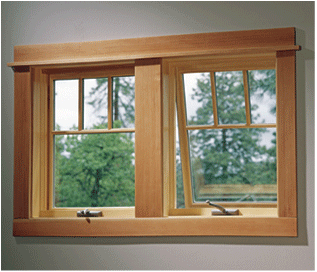I am often asked what kind of window is most accessible. The standard answer are windows with cranks either casement windows or awning windows, but I find there is MUCH more to ensuring windows are accessible, easy to open and manageable.
Homes that have universal design features installed to overcome a disability, plan for aging in place or my favorite universal design for the sake of luxury, comfort and functional ease of use. Following are guidelines for accessible, universal design, easy open windows.
These guidelines are meant to be helpful in selecting windows, the best way to be certain of the most accessible window for you is try the different styles to see which suits your needs best.
 |
| Casement Window |
 |
| Sliding Window |
 |
| Awning Window |
There a three different styles of windows recommended as universal design/handicap accessible, because they are easy to open with limited hand dexterity and strength. They are in order of popularity; casement style windows, awning style windows and sliding windows.
Casement Windows
Casement windows are the most popularly recommended window for universal/handicap accessible home windows. Casement windows open utilize a crank to open the window and the window itself opens from the side.
Casement windows come in a variety of sizes, when buying a casement window make sure the crank and locking hardware have large handles and are easy manipulate.
Casement windows:
- Easier to open because casement windows do not require large movements of the body to move as double hung windows. Making casement windows easier to utilize for someone with postural or mobility limitations.
- Difficult for people with fine motor/dexterity issues to hold onto crank and to move the crank in a rotary manner.
- Oddly enough I have stumbled upon one little glitch with casement windows that was a bit surprising. Birds tend to run into casement windows more than other types of windows, most likely because they open out.
Awning Windows:
Awning windows usually have cranks as do casement windows but instead of opening to the side they are hinged at the top and open from the bottom.
 |
| Both Awning Windows and Casement Windows usually have crank systems for open/close. |
Awning windows have the same accessibility benefits as casement windows, do not require large motor movements and can be difficult for people with fine motor or motor planning issues. Awning windows are not, according to my research, as hazardous to birds as casement windows.
 |
| Awning Window |
Sliding Windows
 |
|
| Sliding Window |
Sliding Windows:
- Require larger body movements. Good for people who are ambulatory but have difficulty with fine motor movements and motor planning.
- Hardware can be installed such as levers to assist in alleviating any fine motor requirements to open/close windows.
The ultimate in accessible windows is the motorized window.
 |
| Motorized Casement Style Window |
Motorized windows.
- Available in either a casement or an awning window style.
- Usually have remote controls and can be part of a home environmental control system.
- Are very pricey.
 |
| Motorized Awning Style Window |
After figuring out which type of window will be easiest to utilize based on hardware, function and abilities. The next important step is to ensure the window and the window hardware is mounted in a functional position/place.

Considerations in mounting/positioning windows for accessibility:
- The window should be mounted low enough for the person to see out of the window.
- The hardware for opening the window should be mounted within reach. If the window hardware/crank will be utilize from a seated position the hardware should be mounted approximately 32″ off the floor to reduce the amount of bending/reaching and to allow good leverage for utilizing a window crank or pushing a sliding window.
- The locks for a window should also be mounted in a place that is at the right height for the user. Again window locks with large, easy-to-use handles are most desirable.
What windows do you recommend using or avoiding? Any interesting window experiences? Please share.


